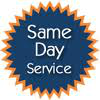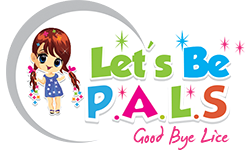NIT AND LICE FREQUENTLY ASKED QUESTIONS
You receive the dreaded call from your child’s school, “Your child has lice. Please come pick them up immediately.” You feel like the world’s worst mom. Doubts go through your mind: maybe you don’t bathe your child often enough; perhaps you need to vacuum the house more often; is your whole house infested now? Should you move?
These fears may sound a little over done, but in our society lice has gotten a bad rap. You feel as though your child, and perhaps your whole family, will be shunned by the school and the neighbors until you can prove to them that your entire family and house has been sterilized and is now lice-free.
The truth about lice is that it has nothing to do with hygiene, socioeconomic status, or ethnic background. Here is a brief discussion about lice, how to treat it, and how to get your family accepted back into society again.
Head lice can survive on a human host for approximately 30 days (this is the life cycle of the human head louse). They generally cannot survive longer than 24-48 hours off the host. A female louse lays 7-10 eggs a day. The eggs hatch in 7-10 days and it takes another 7-10 day for the louse to mature and lay their own eggs.
Rest assured your child will not be able to catch lice from your pet or give it to them for that matter. Why? Simply put, dog lice require dog blood to survive, and cat lice require only cat blood to survive. In other words, pet lice cannot survive on human blood. Along similar lines, your cat or dog cannot catch lice from an infected child as the head lice do require human blood to live.
It also important to remember that human lice are not a result of poor personal hygiene habits. That said, lice in pets and other animals often occur when animals live in insanitary environments. As such, it may be no surprise to learn that lice are not a commonly diagnosed parasite in animals.
What Types of Lice can Pets Catch?
Cats can obtain a type of lice known as Felicola subrostrata. Meanwhile, dogs can catch one of the two following lice types: Trichodectes canis and Linognathus setosus. Other types of animals can get lice on occasion as well, but once again the lice on these animals cannot be transmitted to humans and humans cannot transmit head lice to these animals.
We’d have some very funny looking shaved animals running around if they could catch human head lice!
Lice (singular – louse) are tiny wingless parasites that attach themselves to human hair and feed on human blood. Scientific Name: Pediculus humanus capitis.
Adult lice are about the size of a sesame seed and can be very hard to see, because they can be any color from white to tan to brown.
Lice typically feed on blood four to five times each day. They use their mouth parts to bite into the skin and secrete a substance that acts to block clotting.
While it’s important to note that lice infestations can happen to anyone, some people are at a higher risk of coming into contact with lice.
Adult lice lay eggs on the hair shafts of the head, about 3 mm from the scalp skin. After one week, the eggs hatch and an immature, mobile louse nymph emerges. This nymph hides in the scalp and after 7 to 10 days it matures enough to begin laying eggs. Adult lice can only live 1 or 2 days away from a warm body, and the eggs must be close to the warm scalp in order to hatch. They feed on human blood through tiny bites in the skin.
There are several things to look for:
Itchy scalp – this is the most common symptom, although very light infestations (5 or less lice) may not itch.
Visible live nymphs or adult lice – this are tiny, clear to white mobile bugs visible on the scalp or hair shafts. They are most often seen in the hair behind the ears and the nape of the neck. Adult lice are quite fast and therefore more difficult to spot.
Visible nits – “nits” are tiny white shells that are glued to the hair shaft near to the skin. The nit can either contain a live egg, or can be empty (the egg already hatched). Nits close to the scalp are more likely to contain eggs, and those more than ½ an inch away from scalp are probably empty. Nits are often difficult to distinguish from normal dandruff in the hair shaft. One way to tell is that dandruff will easily slide off the hair with your fingers, whereas nits are glued to the hair shaft and are not easily moved.
Non-medicated treatments – here are several harmless, messy, ineffective home treatments that probably will not eliminate lice.
Mayonnaise Petroleum jelly (Vaseline) The idea is that these work by suffocating the lice and their eggs. Read more about Lice Home Remedies and Why They Don’t work. Pesticide-free Shampoo. There are several different ways to treat lice, both medical and non-medical. Over the years most lice have become resistant to the commonly used medicated shampoos, we recommend trying a pesticide-free shampoo treatment. Medicated shampoos – We will discuss these in order of least toxic to most toxic. While the first several shampoos are very safe when used as directed and have virtually no chance of side effects, the last two – Lindane and malathion are more potentially toxic. We suggest you try some of the non- medical treatments before resorting to these two strong prescription shampoos. Pyrethrin or pyrethrum (brand names RID, A-200, Clear, Pronto, R & C) – The pyrethrins are a pair of natural organic compounds normally derived from Chrysanthemum cinerariifolium that have potent insecticidal activity. Pyrethrins are neurotoxins that attack the nervous systems of all insects. When present in amounts not fatal to insects, they still appear to have an insect repellent effect. Pyrethrins are gradually replacing organophosphates and organochlorides as the pesticide of first choice. They are non persistent, being biodegradable, and break down on exposure to light or oxygen. The chemical structure of pyrethrins inspired the production of a variety of synthetic insecticides called pyrethroids such as bifenthrin, permethrin, and cypermethrin. Permethrin 1% (brand name NIX) – this over the-counter rinse is a synthetic pesticide.
Malathion (brand name Ovide) – this pesticide is available by prescription. It is for kids 6 years and older. You may have heard of this pesticide – it is sprayed from aircraft over cities to control certain agricultural insects including fruit flies. This shampoo lotion was previously used in the U.S., then was taken off the market for a while (although it was still used in other countries), and is now recently approved again by the FDA for use in the U.S. Lindane – this is another pesticide available by prescription. It is approved for children of all ages, although should be used with extreme caution in kids under 2 years. It is the most potentially toxic of all the lice shampoos
Examine household and close contacts – check for nits or live lice. Anyone with visible lice should be treated. You do not need to automatically treat everybody that has come into contact with your child.
Brushes and combs can be soaked in hot water (more than 128 degrees F) for 10 minutes. Water that is close to boiling is plenty hot enough.
Pillow cases, sheets, hats, clothing worn in the past few days, coats and ornamental hair clips and ribbons can be machine washed in the hot cycle then dried on the hot cycle or put in the freezer if they have glue on them or can’t be washed
Vacuuming is a good alternative to bagging items.
Check your child’s scalp every 2 to 3 days for any new lice or nits. Use a professional steel nit comb. (This is key to elimination and prevention)
Lice don’t live in your environment – they live on your head. Spend your time and energy on the head – it’s where they live!
Some schools have a “no nit” policy, stating that your child must be completely free of nits before returning to school. This policy has not been shown to decrease the spread of lice, but some schools remain strict nonetheless.
 Let’s Be P.A.L.S offers same day service in most cases. We are serious professionals ready to help you get rid of lice.
Let’s Be P.A.L.S offers same day service in most cases. We are serious professionals ready to help you get rid of lice.


Get Social